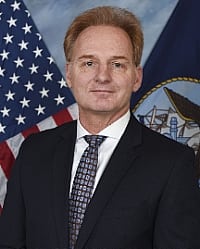
The Acting Secretary of the Navy on Wednesday explained why the service is pushing plans to reach 355 ships within 10 years in the Force Structure Assessment (FSA) and said he would present the plans to the Secretary of Defense within days. While speaking at a Center for Strategic and Budgetary Assessments event Wednesday, Thomas Modly noted the National Security Adviser is a proponent of the 355-ship fleet and President Trump mentioned it when he saw him during the Army-Navy…

 By
By 











